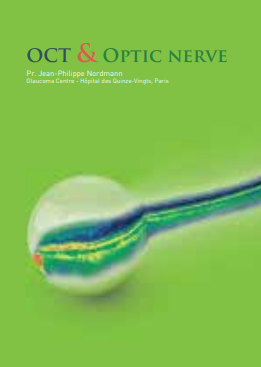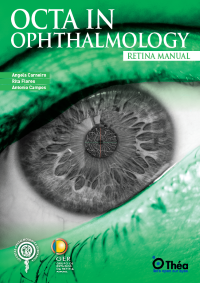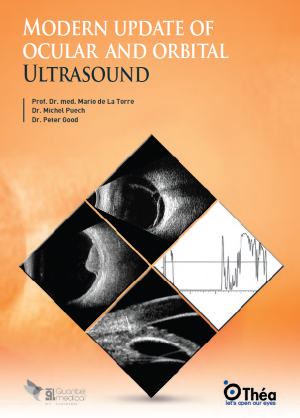
Optical Coherence Tomography (OCT) is a revolutionary imaging technique that has transformed the field of ophthalmology. By using light waves to create detailed cross-sectional images of the retina and optic nerve, OCT has become an indispensable tool in the assessment of optic nerve health and optical nerve imaging. This non-invasive technique allows clinicians to visualize the microstructures within the eye, providing insights that were previously unattainable with conventional imaging methods.
The significance of OCT in optic nerve assessment lies in its ability to capture high-resolution images that reveal the intricate details of the optic nerve head and surrounding retinal layers. This capability is crucial for diagnosing a wide range of optic nerve disorders, including glaucoma, optic neuritis, and optic neuropathies. Moreover, OCT enables the detection of subtle changes in the optic nerve structure, which can indicate the early stages of disease progression before any noticeable symptoms arise.
One of the key advantages of OCT is its ability to provide quantitative measurements of the retinal nerve fiber layer (RNFL) thickness. The RNFL is composed of the axons of retinal ganglion cells, which converge at the optic nerve head. Changes in the thickness of the RNFL can be indicative of optic nerve damage or disease. By measuring the RNFL thickness, OCT allows clinicians to monitor the health of the optic nerve over time and detect any signs of deterioration at an early stage.
To fully appreciate the value of OCT in optic nerve evaluation, it is important to understand the anatomy of the optic nerve. The optic nerve is a bundle of nerve fibers that transmits visual information from the retina to the brain. It consists of approximately 1.2 million axons of retinal ganglion cells, which are responsible for transmitting electrical signals generated by light-sensitive cells in the retina.
The optic nerve head, also known as the optic disc, is the point where the optic nerve exits the eye and connects to the brain. The optic disc is characterized by its distinctive round shape and pale appearance. Surrounding the optic disc is the neuroretinal rim, which contains the axons of the retinal ganglion cells. The thickness of the neuroretinal rim is a critical parameter in assessing the health of the optic nerve, as thinning of the rim can be an early sign of glaucoma or other optic neuropathies.
OCT provides a detailed view of the optic nerve head and its surrounding structures. By capturing cross-sectional images, OCT allows clinicians to visualize the different layers of the retina and measure their thickness. This information is invaluable in assessing the structural integrity of the optic nerve and detecting any abnormalities that may indicate disease. In addition to the optic nerve head, OCT can also image the macular region of the retina, which contains a high density of retinal ganglion cells. The macular ganglion cell complex (GCC) includes the ganglion cell layer, inner plexiform layer, and retinal nerve fiber layer. Changes in the thickness of the GCC can provide important insights into the health of the optic nerve and the presence of optic neuropathies.
Optic neuropathies are a group of disorders characterized by damage to the optic nerve, leading to vision loss or impairment. Neuro-ophthalmology diagnostics can be challenging, as the symptoms may vary depending on the underlying cause and the extent of nerve damage. However, OCT has emerged as a powerful tool in the diagnosis of these conditions, providing clinicians with detailed structural information that can aid in identifying the specific type of optic neuropathy.
One of the most common optic neuropathies is glaucoma, a condition characterized by increased intraocular pressure that leads to progressive damage to the optic nerve. OCT plays a crucial role in the diagnosis and management of glaucoma by providing quantitative RNFL analysis and measurements of neuroretinal rim thickness. These measurements allow clinicians to detect early signs of glaucoma and monitor the progression of the disease over time.
In addition to glaucoma, OCT is also valuable in diagnosing other optic neuropathies such as optic neuritis, ischemic optic neuropathy, and compressive optic neuropathy. Optic neuritis, for example, is an inflammatory condition that affects the optic nerve and can cause sudden vision loss. OCT can reveal swelling of the optic nerve head and changes in the thickness of the RNFL, which are characteristic findings in optic neuritis. Similarly, in ischemic optic neuropathy, OCT can detect areas of RNFL thinning and structural changes in the optic nerve head that result from reduced blood flow to the optic nerve.
Compressive optic neuropathy occurs when a mass or lesion compresses the optic nerve, leading to vision loss. OCT can help identify the location and extent of the compression, as well as assess the structural damage to the optic nerve. By providing detailed images of the optic nerve and surrounding tissues, OCT aids in the diagnosis and management of compressive optic neuropathies and guides treatment decisions.
One of the key strengths of OCT is its ability to monitor the progression of optic nerve diseases over time. By obtaining serial OCT images, clinicians can track changes in the optic nerve’s structure and assess the effectiveness of treatments. This longitudinal monitoring is essential for managing chronic conditions such as glaucoma, where continuous assessment of the optic nerve is necessary to prevent further vision loss.
In glaucoma, for example, OCT can reveal progressive thinning of the RNFL, which indicates ongoing damage to the optic nerve. By comparing sequential OCT images, clinicians can detect subtle changes in the RNFL thickness and adjust treatment plans accordingly. This proactive approach allows for timely interventions and helps to preserve the patient’s vision.
OCT is also valuable in monitoring other optic neuropathies, such as optic neuritis and ischemic optic neuropathy. In optic neuritis, OCT can track the resolution of optic nerve swelling and the recovery of RNFL thickness following treatment. Similarly, in ischemic optic neuropathy, OCT can monitor the structural changes in the optic nerve head and assess the response to therapeutic interventions.
Furthermore, OCT can be used to evaluate the effectiveness of new treatments and therapies for optic nerve diseases. By providing objective measurements of the optic nerve’s structure, OCT allows researchers to assess the impact of experimental treatments on the optic nerve and identify potential benefits or adverse effects. This information is crucial for advancing the understanding and management of optic neuropathies.
The integration of OCT into clinical practice has significantly enhanced the evaluation of the optic nerve. With its ability to provide detailed and quantitative assessments, OCT has become a cornerstone in the diagnosis, monitoring, and management of optic neuropathies. The high-resolution images and quantitative measurements obtained through OCT enable clinicians to detect early signs of disease, monitor disease progression, and assess the effectiveness of treatments.
As OCT technology continues to advance, its role in enhancing our understanding and treatment of optic nerve diseases will only grow more prominent. Future developments in OCT may include improved imaging techniques, faster acquisition times, and enhanced image resolution, further expanding the capabilities of this valuable tool. Ultimately, OCT represents a significant leap forward in the field of ophthalmology, offering new possibilities for improving patient care and preserving vision.


